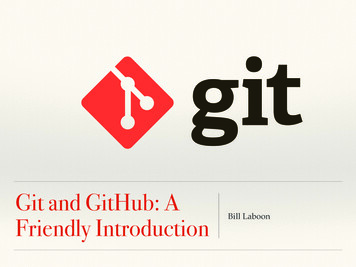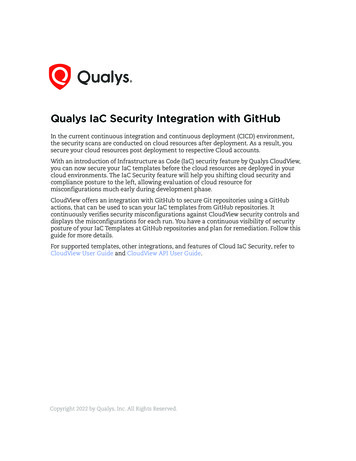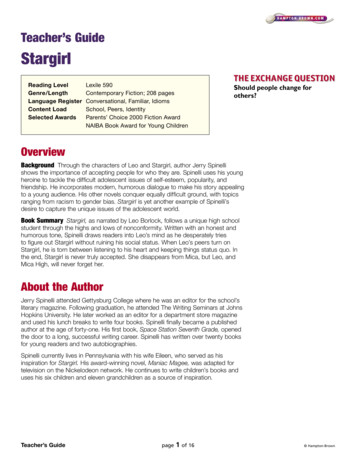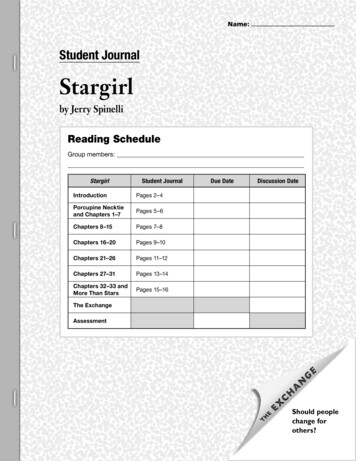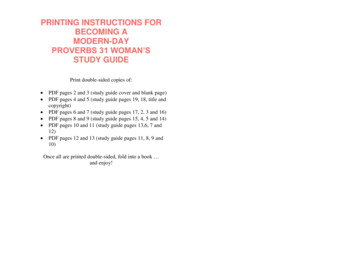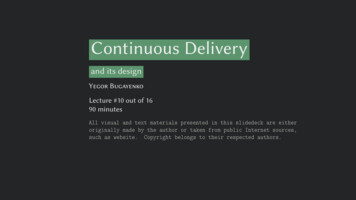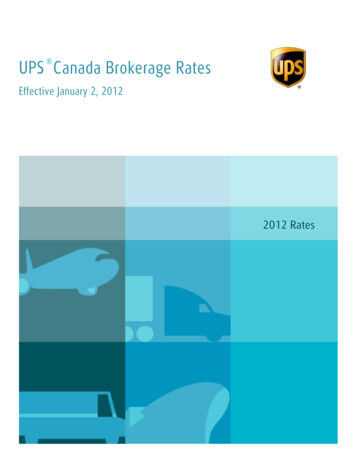
Transcription
NP IIWebsocketsFacultad de Informática
Introduction Websockets– Protocol originaly proposed by HTML5 forbidirectional full-duplex communication in Webapplications– Defined by IETF (RFC 6455, 12/2011)– API defined by W3C (HTML living standard)
Why Websockets? HTTP/1.1– Half-duplex– Unidirectional Client requests, server responds– Designed for data transfer and other staticresources– Stateless– Complex, inneficient
HTTP Limitations Full-duplex emulation with HTTP– AJAX (Asynchronous JavaScript XML) Contents can change without changing allwebpage Low-latency perception for the user– COMET Technique for push on the server side No standard, too complex
HTTP limitations Polling– Used in AJAX to simulate real-time– Client sends request at regular intervalsSource: PeterLubbers
HTTP limitations Long Polling (aka Asynchronous polling)– Client sends one request and server retains itopen for a whileFuente: PeterLubbers
HTTP limitations Streaming– More efficient, but some problems Proxies and firewalls Response accummulation and necessity of flushesFuente: PeterLubbers
Overhed HTTP Ej. Headers HTTP (client)GET /PollingStock//PollingStock HTTP/1.1Host: localhost:8080User-Agent: Mozilla/5.0 (Windows; U; Windows NT 5.1; en-US; rv:1.9.1.5)Gecko/20091102 Firefox/3.5.5Accept: text/html,application/xhtml xml,application/xml;q 0.9,*/*;q 0.8Accept-Language: en-usAccept-Encoding: gzip,deflateAccept-Charset: ISO-8859-1,utf-8;q 0.7,*;q 0.7Keep-Alive: 300Connection: keep-aliveReferer: http://localhost:8080/PollingStock/Cookie: showInheritedConstant false; showInheritedProtectedConstant false;showInheritedProperty false; showInheritedProtectedProperty false;showInheritedMethod false; showInheritedProtectedMethod false;showInheritedEvent false; showInheritedStyle false; showInheritedEffect false;
Overhead HTTP Ej. Headers HTTP (server)HTTP/1.x 200 OKX-Powered-By: Servlet/2.5Server: Sun Java System Application Server 9.1 02 Content-Type:text/html;charset UTF-8 Content-Length: 321Date: Sat, 07 Nov 2009 00:32:46 GMT
Overhead HTTP HTTP Header Overhead– Between 800 and 2000 bytes per request/reply– In the example, 871 bytes
Websockets Features–––––Only one TCP socketComunication full-duplexShares ports with HTTP/S (80/443)Through firewalls and proxiesSmall hader size 2 bytes best case!– Used as a transport protocol for web apps Layer-7 OSI
Websockets Communication flowSource: Oscar Tong
Protocol Websockets 3 stages
Protocol Websockets HandshakeFuente: Peter Lubbers
Protocol Websockets Handshake challengeGET /chat HTTP/1.1Host: www.example.comOrigin: http://www.example.comUpgrade: websocketConnection: UpgradeSec-WebSocket-Key: dGhIHNhbXBsZSBub25jZQ Sec-WebSocket-Protocol: chat, superchatSec-WebSocket-Version: 13HTTP/1.1 101 Switching ProtocolsUpgrade: websocketConnection: UpgradeSec-WebSocket-Accept: s3pPLMBiTxaQ9kYGzzhZRbK xOo Sec-WebSocket-Protocol: chatGUID cket-Accept base64( sha1( Sec-WebSocketKey GUID ));
Protocol Websockets Frames– Small header ( 2 bytes)– Payload can be text or binary
Websockets OpcodeOpcode0x00x10x20x80x90xATipo de frameconttextbinaryclosepingpong
Websockets Masking data (client)Fuente: Oscar Tong
Protocol Websockets HTTP vs. WebsocketsOverheadLatencyLatency (polling)Latency (long polling)HTTPWebsockets800-2K bytes2-6 bytes (typical)New connection every timeReuse connectionWait to next intervalNo waitNone if previous request; time tonext request in other caseNo wait
Protocol Websockets HTTP vs WebsocketsFuente: Peter Lubbers
API Websockets API defined W3C– Consult HTML living standardConstructorWebSocket()Eventsonopen, onerror, onmessage, oncloseMethodssend(), close()Attributesurl, readyState, bufferedAmout,binaryType, extensions, protocol
API Websockets Websocket creationvar myWebSocket new WebSocket(url, [protocol] );– URL: ws:// o wss:// (SSL)
API Websockets AttributesmyWebSocket.readyState–Representa estado de la conexión 0: Not ready yet 1: establish is done 2: Closing now 3: closedmyWebSocket.bufferedAmount– Buffer size, used by send()
API Websockets Event ebSocket.onerrormyWebSocket.onclose– Funciones to invoke when event is triggered
API Websockets Example//Create new WebSocketvar mySocket new WebSocket("ws://www.WebSocket.org");// Associate listenersmySocket.onopen function(evt) { };mySocket.onclose function(evt) {alert("closed w/ status: " evt.code); };mySocket.onmessage function(evt) {alert("Received message: " evt.data);};mySocket.onerror function(evt) {alert("Error"); };// Sending datamySocket.send("WebSocket Rocks!");// Close WebSocketmySocket.close();
API Websockets Soporte navegador– https://caniuse.com/#search web%20socket
API Websockets Server libraries–––––––KaazingSocket.io (node.js)PywebsocketApache-websocketNettyNode.js .
API Websockets Client libraries–––––Web-socket-js (JavaScript)Java WebSocket Client (Java)Arduino WebSocket client (C )Libwebsockets (C)
Demo Examples:– http://www.websocket.org/echo.html– http://demos.kaazing.com/echo
Demo In Chrome (DevTools)– Analyze source code– Visualize headers and messages
Demo In Wireshark
Enlaces relevantes sewebbook.com/ch8 htmlkaazing.com
Masking data (client) Fuente: Oscar Tong. Protocol Websockets HTTP vs. Websockets HTTP Websockets Overhead 800-2K bytes 2-6 bytes (typical) Latency New connection every time Reuse connection Latency (polling) Wait to next interval No wait Latency (long polling) None if previous request; time to

